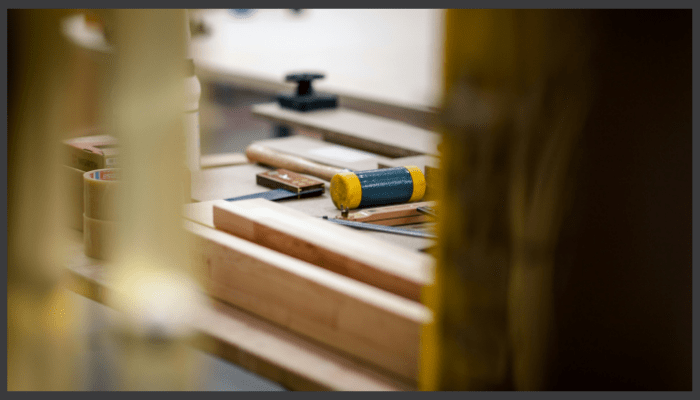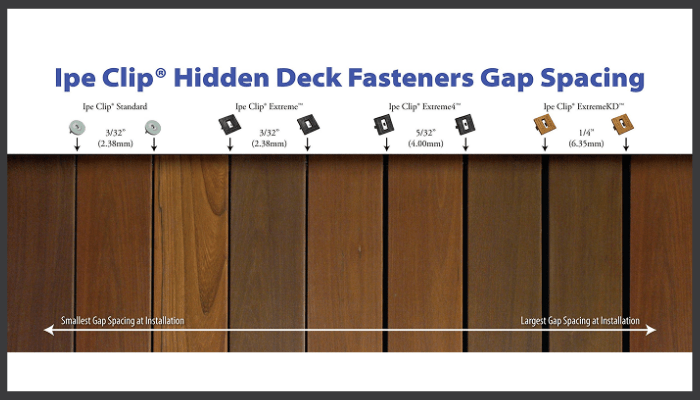Is 4mm spacing enough for spotted gum decking in humid climates?
Table of Content:
- Why Decking Spacing Matters in Humid NSW
- Spotted Gum: Timber Behaviour and Moisture Movement
- Consequences of Spacing That's Too Tight
- What Australian Guides Recommend
- Choosing Between 4mm, 5mm and 6mm Gaps
- Best Practice During Installation
- Maintenance to Protect Spacing and Finish
- Conclusion
- Frequently Asked Questions
Why Decking Spacing Matters in Humid NSW
Building a spotted gum deck in humid NSW areas means you’ll probably ask yourself, “is 4mm spacing enough for spotted gum decking in humid climates?”, because board spacing plays a bigger role than you’d think.
Plenty of homeowners wonder the same thing: is 4mm spacing enough for spotted gum decking in humid climates?
While 4mm is the minimum standard, what works best depends on board width, timber species, moisture content, and deck design.
Want the quick answer? 4mm's your bare minimum.
For most spotted gum decks around humid NSW, you're better off with 5 to 6mm gaps to handle timber expansion and keep proper drainage flowing.
Spotted Gum: Timber Behaviour and Moisture Movement
Spotted gum ranks as a dense Aussie hardwood famous for its strength, termite-resistant properties, and solid natural durability rating. But even tough timbers still absorb moisture from the air around them.
When humidity climbs, boards expand; when it drops, they shrink back.
Take a standard 90 to 130mm timber decking board, and that movement easily swallows a 4mm gap during wet spells. Without enough clearance, boards press together.
This can lead to cupping, buckling, or moisture getting trapped underneath. Getting your decking spacing right helps with air circulation and water drainage.
This also prevents issues like surface tannin or resin bleed. All of these factors can make your finished deck last longer.
Consequences of Spacing That's Too Tight
Tight gaps between timber decking boards trigger cascading problems, especially in muggy areas. Water and crud get stuck between boards, causing staining and subsequent mould growth you don't want.
Poor ventilation speeds up rot and decay, particularly over concrete or in ground contact spots. Expansion pressure causes splitting, cupping, or loose fasteners every time.
Meanwhile, rubbish drainage corrodes your screws, nails, and steel joists faster than they should. What's that mean? Your deck carks it sooner and needs more maintenance than necessary.
What Australian Guides Recommend

There's no single Australian Standard for exact spacing. But, many trusted industry sources provide good guidance:
-
WoodSolutions suggests a minimum 4mm gap between seasoned timber decking boards. This gap helps airflow and drainage function well.
-
Timber Queensland and FWPA point out humid climates and wider boards need bigger gaps, usually 5 to 7mm works best.
-
Meyer Timber says 3 to 4mm for 90mm boards and 5 to 6mm for 140mm boards, warning gaps might close if you've installed wet timber.
-
Mortlock Timber recommends 5mm spacing for 85mm boards and 6mm for 130mm boards to handle movement.
Basically, 4mm only works for narrower boards installed bone dry. Wider boards or coastal NSW conditions need slightly bigger gaps for good ventilation.
Typical Recommended Spacing by Board Width
Choosing Between 4mm, 5mm and 6mm Gaps
A 4mm spacing might work for narrow, kiln dried spotted gum boards on a well ventilated deck, but wetter NSW areas need 5 to 6mm gaps for practicality.
Wider gaps give better airflow and stop timber decking boards squashing together during humid spells. They also help surface water drain faster, cutting down swelling and resin bleed issues.
You'll barely notice the difference looking at your finished deck, but it'll add years to its life.
For most NSW installations, the key is balancing performance, appearance, and maintenance. This often means using 5 to 6mm decking spacing.
Best Practice During Installation
A few smart moves make the difference between a deck lasting decades and one that carks it early. Seal and coat every surface by slapping on a protective coating or oil to all sides and ends of your timber decking boards before installation.
Use treated or galvanized materials for better durability. Options include preservative-treated pine, RH treated pine, or hot-dipped galvanized fixings. Get your joist spacing right, usually 450mm centres for 19mm boards works perfectly.
Pre drill holes to stop splitting and boost the holding capacity of your fixings. Maintain good ventilation by keeping at least 100mm clearance under the deck for airflow to work properly.
Skip trapped moisture by installing your deck above concrete or on sloped surfaces with decent drainage. These installation tricks work together.
They stop movement and surface damage, even if humidity rises a lot.
Maintenance to Protect Spacing and Finish
After installation, keep your finished deck looking mint with these habits:
-
Re oil or reseal every 1 to 2 years to slow moisture absorption down.
-
Clean crud between boards so drainage keeps working.
-
Check fixings regularly for corrosion, especially around edges and joints where problems start.
-
Recoat cut ends or damaged edges to stop resin bleed or tannin stains wrecking your timber.
A few hours of seasonal maintenance adds years to your deck's life without breaking a sweat.
Conclusion
So, is 4mm spacing enough for spotted gum decking in humid climates? It can work, but only under perfect conditions with narrow, fully seasoned boards and brilliant ventilation.
For most NSW decks, a 5 to 6mm gap gives you safer margin for timber movement and drainage. When you're unsure, go slightly wider.
That extra millimeter or two helps your deck perform well all year without issues — one of the many reasons spotted gum remains a superior choice for Australian decking in humid conditions.
For personalized advice on spotted gum decking, board spacing, and installation, reach out to Pinus Sawmills. They are your local timber experts for Canberra, Queanbeyan, and nearby areas.
Frequently Asked Questions
What is the Best Gap for Spotted Gum Decking?
For most NSW conditions, 5 to 6mm gaps work best, handling timber expansion and humidity nicely.
Can I Install Spotted Gum Decking With 4mm Spacing?
Yes, but only for narrow, seasoned timber decking boards installed in dry, well ventilated conditions.
Does Board Thickness Affect Spacing?
Yes. Thicker boards resist cupping and manage smaller gaps well. However, width causes more expansion than thickness.
Should Decking Be Spaced Differently Over Concrete?
Absolutely. Decks over concrete or close to ground contact need extra ventilation and slightly wider gaps for moisture control.
Will Wider Gaps Look Odd?
Not at all, a 1 to 2mm difference barely shows but dramatically improves drainage and durability of your hardwood.
How Often Should I Re Oil My Deck?
Every 12 to 24 months depending on exposure. This preserves the protective coating and reduces moisture absorption in the timber.
Do I Need to Pre Drill My Boards?
Yes. Pre drilled holes prevent splitting and improve the holding capacity of your screws and fixings, and it’s worth remembering the common question: is 4mm spacing enough for spotted gum decking in humid climates?



